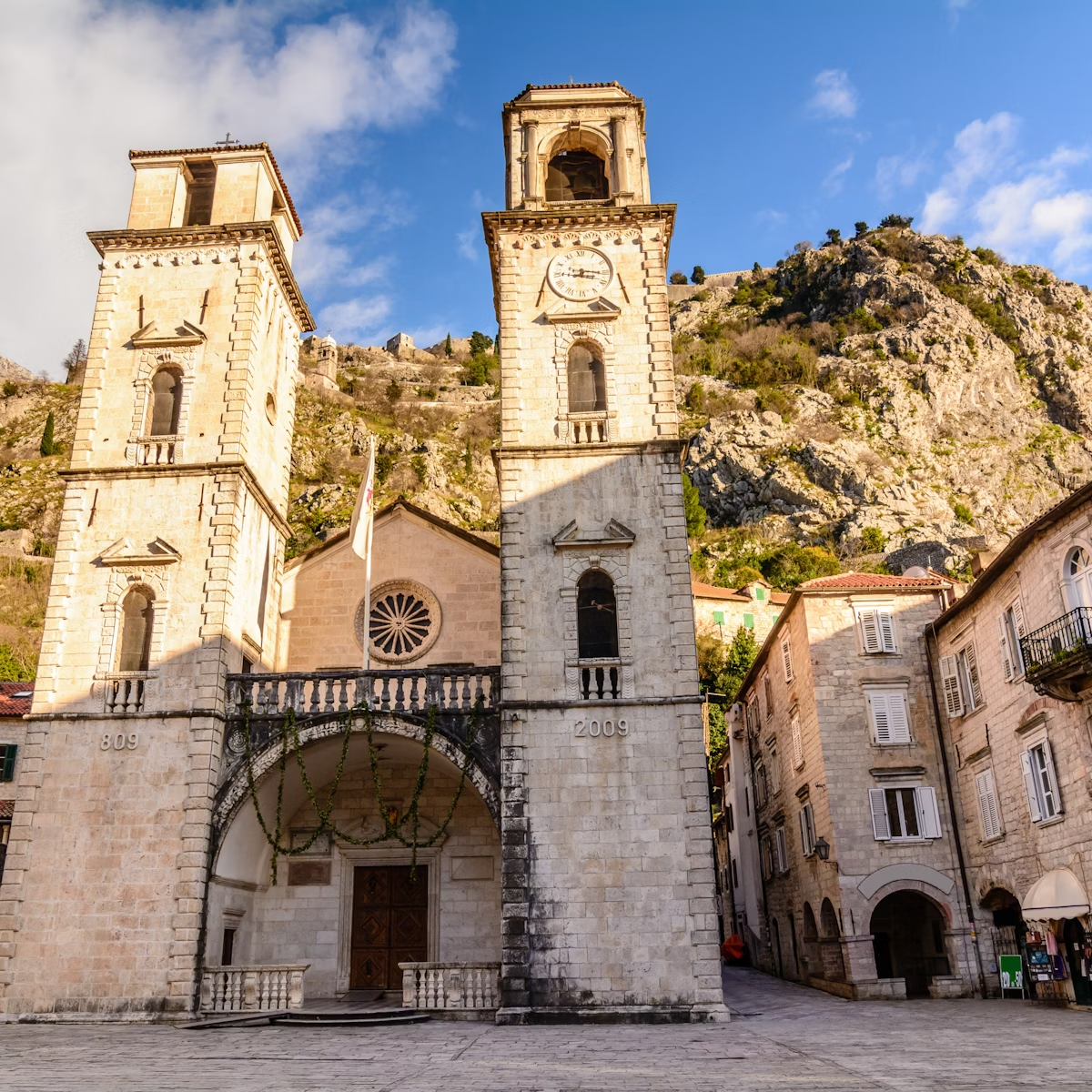
Kotor
Kotor’s most impressive building, this Catholic cathedral was consecrated in 1166 but reconstructed after several earthquakes. When the entire frontage…

Kotor
Kotor’s most impressive building, this Catholic cathedral was consecrated in 1166 but reconstructed after several earthquakes. When the entire frontage…

Kotor
Kotor's fortifications started to head up St John's Hill in the 9th century and by the 14th century a protective loop was completed, which was added to…

Kotor
The main entrance to the town was constructed in 1555 when it was under Venetian rule (1420–1797). Look out for the winged lion of St Mark, Venice’s…

Kotor
Sweet little St Luke’s speaks volumes about the history of Croat-Serb relations in Kotor. It was constructed in 1195 as a Catholic church, but from 1657…

Kotor
Kotor's proud history as a naval power is celebrated in three storeys of displays housed in a wonderful early-18th-century palace. An audio guide helps…

Kotor
Built in 1221 on the site of a 6th-century basilica, this Catholic church is distinguished by impressive 20th-century bronze doors covered in bas-reliefs,…

Kotor
Breathe in the smell of incense and beeswax in this Orthodox church, built in 1909 and adorned with four huge canvasses depicting the gospel writers, a…

Kotor
Tucked in the slightly quieter northern corner of town beside the parklike Trg od Drva (Wood Sq), this gate opens on to a photogenic moat formed by the…

Kotor
Fewer tourists make it to the south end of town, where the houses narrow into a slim corridor leading to this bastion and gate (parts of which date from…

Kotor
Aside from a fine rose window there's not much ornamentation on the facade of this Catholic church, built between the 14th and 17th centuries. But head…

Kotor
Crazy cat people and those with a fondness for whimsical vintage art will adore this charming museum, home to thousands of moggie-themed postcards,…

Kotor
Built in 1602, this tall tower looks down on an unusual stone pyramid; it was once a pillory used to shame wayward citizens.